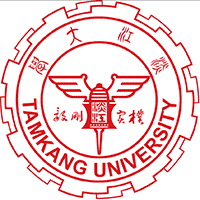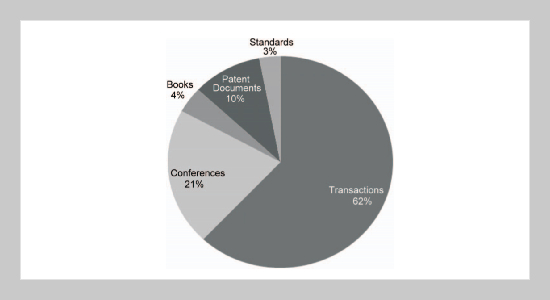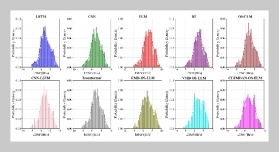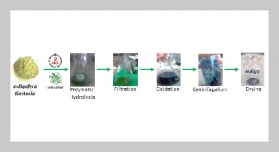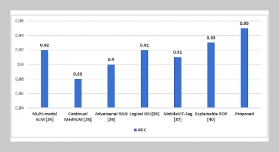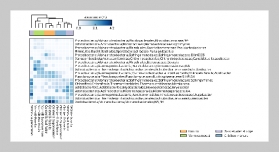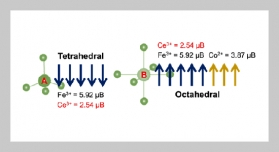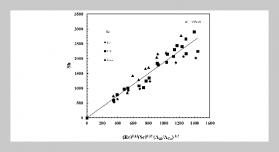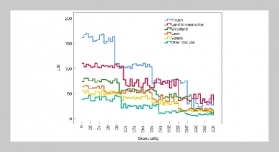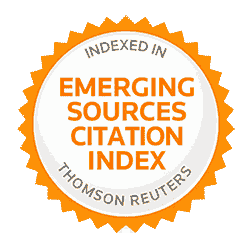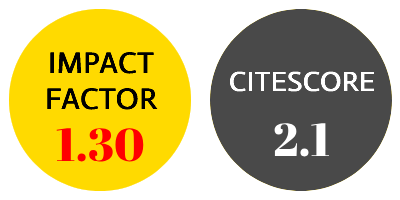REFERENCES
- [1] Bollen, M., “Understanding Power Quality Problems Voltage Sags and Interruptions”, IEEE Press Series on Power Engineering John Wiley and Sons, Piscataway, USA (2000). doi: 10.1109/9780470546840. ch4
- [2] Rajakumar, P., et al., Review on Power Quality Issues, IRACST Engineering Science and Technology: An International Journal (ESTIJ), ISSN: 2250-3498, Vol. 2, No. 1 (2012).
- [3] Delgado, J., Gestão da Qualidade Total Aplicada ao Sector do Fornecimento da Energia Eléctrica, Ph. D. Dissertation Electrotechnical Engineering, Universidade de Coimbra, Portugal September (2002).
- [4] Choi, W. Y., Kwon, J., Kim, E. H., Lee, J. J. and Kwon, B. H., “Bridgeless Boost Rectifier with Low Conduction Losses and Reduced Diode Reverse Recovery Problems,” IEEE Trans. Ind. Electron., Vol. 54, No. 2, pp. 769780 (2007). doi: 10.1109/TIE.2007.891991
- [5] Lin, T., Domijan, A., Jr. and Chu, F., “ASurvey of Techniques for Power Quality Monitoring,” Int. J. Power Energy Syst., Vol. 25, No. 3, pp. 167172 (2012).
- [6] Chen, G., Chen, Y. and Smedley, K. M., “Three-phase Four-leg Active Power Quality Conditioner without References Calculation,” Proc. Appl. Power Electron. Conf., pp. 587593 (2004). doi: 10.1109/APEC.2004. 1295866
- [7] López, Y.-K., de Vicuña, L. G., Castilla, M., Matas, J. and López, M., “Sliding-mode-control Design of a High-power-factor Buck-boost-rectifier,” IEEE Trans. Ind. Electron., Vol. 46, pp. 604612 (1999).
- [8] Mollov, S. V. and Forsyth, A. J., “Analysis, Design and Resonant Current Control for a 1-MHz High-powerfactor Rectifier,” IEEE Trans. Ind. Electron., Vol. 46, pp. 620627 (1999). doi: 10.1109/41.767070
- [9] García, A. J., Cobos, J. A., Prieto, R., Alou, P. and Uceda, J., “An Alternative to Supply DC Voltages with High Power Factor,” IEEE Trans. Ind. Electron., Vol. 46, pp. 703709 (1999). doi: 10.1109/41.778219
- [10] Lee, J.-Y., Moon, G.-W. and Youn, M.-J., “Design of a Power-factor-Correction Converter Based on Halfbridge Topology,” IEEE Trans. Ind. Electron., Vol. 46, pp. 710723 (1999). doi: 10.1109/41.778222
- [11] Madigan, M. T., Erickson, R. W. and Ismail, E. H., “Integrated High-quality Rectifier-regulators,” IEEE Trans. Ind. Electron., Vol. 46, pp. 749758 (1999). doi: 10.1109/41.778229
- [12] Wu, T.-F. and Chen, Y.-K., “Analysis and Design of an Isolated Single Stage Converter Achieving Power-factor Correction and Fast Regulation,” IEEE Trans. Ind. Electron., Vol. 46, pp. 759767 (1999). doi: 10.1109/ 41.778230
- [13] Hsieh, G.-C. and Wang, C.-M., “ZCS-PWM Full-wave Boost Rectifier with Unity Power Factor and Low Conduction Losses,” IEEE Trans. Ind. Electron., Vol. 46, pp. 768779 (1999). doi: 10.1109/41.778234
- [14] Tseng, C.-J. and Chen, C.-L., “ANovel ZVT PWM Cúk Power-factor Corrector,” IEEE Trans. Ind. Electron., Vol. 46, pp. 780787 (1999). doi: 10.1109/41.778240
- [15] Ferracci, P., “Power Quality,” Schneider Electric Cahier Technique, No. 199, September (2012).
- [16] Zhu, P., Li, X., Kang, Y. and Chen, J., “A Novel Control Scheme in 2-phase Unified Power Quality Conditioner,” in Proc. 29th Annu. Conf. IEEE Ind. Electron. Soc., pp. 169171622 (2003). doi: 10.1109/TIE.2014. 2314055
- [17] Ghosh, A., Jindal, A. K. and Joshi, A., “Modified Power Quality Conditioner for Voltage Regulation of Critical Load Bus,” Proc. Power Eng. Soc. Gen. Meet., pp. 471476 (2004). doi: 10.1109/PES.2004.1372840
- [18] Cheng, Y. and Philippe, L., “Advanced Control Methods for the 3-phase Unified Power Quality Conditioner,” Proc. Power Electron. Spec. Conf., pp. 4263 4267 (2004). doi: 10.1109/PESC.2004.1354754
- [19] Tlusty, J. and Valouch, V., “Effectiveness of Unified Power Quality Conditioner for Flicker Mitigation,” Proc. 4th Int. Power Electron. Motion Control Conf., pp. 902907 (2004).
- [20] Khadkikar, V., Agarwal, P., Chandra, A., Barry, A. and Nguyen, T., “A Simple New Control Technique for Unified Power Quality Conditioner (UPQC),” Proc. 11th Int. Conf. Harmonics Quality Power, pp. 289 293 (2004). doi: 10.1109/ICHQP.2004.1409369
- [21] Esfandiari, A., Parniani, M. and Mokhtari, H., “Mitigation of Electric Arc Furnace Disturbances Using the Unified Power Quality Conditioner,” Proc. 30th Annu. Conf. Ind. Electron. Soc., pp. 14691474 (2004). doi: 10.1109/IECON.2004.1431795
- [22] Sepulveda, C. A., Espinoza, J. R., Moran, L. A. and Ortega, R., “Analysis and Design of a Linear Control Strategy for Three-phase UPQCs,” Proc. 30th Annu. Conf. IEEE Ind. Electron. Soc., Vol. 3, pp. 30603065 (2004). doi: 10.1109/IECON.2004.1432300
- [23] Ng, F., Wong, M. C. and Han, Y. D., “Analysis and Control of UPQC and its DC-link Power by Use of pq-r Instantaneous Power Theory,” Proc. Power Electron. Syst. Appl., pp. 4353 (2004). doi: 10.1109/TPEL. 2004.826499
- [24] Tey, L. H., So, P. L. and Chu, Y. C., “Unified Power Quality Conditioner for Improving Power Quality Using ANN with Hysteresis Control,” Proc. Int. Conf. Power Syst. Technol., pp. 14411446 (2004). doi: 10. 1109/ICPST.2004.1460229
- [25] Vinod Khadkikar, Enhancing Electric Power Quality Using UPQC: A Comprehensive Overview, IEEE Transactions on Power Electronics, Vol. 27, No. 5 (2012). doi: 10.1109/TPEL.2011.2172001
- [26] Ribeiro, P., Johnson, B., Crow, M., Arsoy, A. and Liu, Y., “Energy Storage Systems for Advanced Power Applications,” Proceedings of the IEEE, Vol. 89, No. 12, (2001). doi: 10.1109/5.975900
- [27] Kwon, J. M., Choi, W. Y. and Kwon, B. H., “Cost-effective Boost Converter with Reverse-recovery Reduction and Power Factor Correction,” IEEE Trans. Ind. Electron., Vol. 55, No. 1, pp. 471473 (2008). doi: 10.1109/TIE.2007.896526
- [28] Tofoli, F. L., Coelho, E. A. A., de Freitas, L. C., Farias, V. J. and Vieira, J. B. Jr., “Proposal of a Soft-switching Single-phase Three-level Rectifier,” IEEE Trans. Ind. Electron., Vol. 55, No. 1, pp. 107113 (2008). doi: 10. 1109/TIE.2007.896052
- [29] IEEE Recommended Practice for Monitoring Electric Power Quality, IEEE Std. 1159-2009 (2009).
- [30] Ghosh, A., Jindal, A. K. and Joshi, A., “Inverter Control Using Output Feedback for Power Compensating Devices,” Proc. Convergent Technol. Conf., pp. 48 52 (2003). doi: 10.1109/TENCON.2003.1273212
- [31] Rodríguez, E., Abud, D. and Arau, J., “A Novel Singlestage Single-phase DC Uninterruptible Power Supply with Power-factor Correction,” IEEE Trans. Ind. Electron., Vol. 46, pp. 11371147 (1999). doi: 10.1109/41. 808002
- [32] Alonso, J. M., Calleja, A. J., López, E., Ribas, J. and Scades, M. R., “A Novel Single-stage Constant-wattage High-power-factor Electronic Ballast,” IEEE Trans. Ind. Electron., Vol. 46, pp. 11481158 (1999). doi: 10. 1109/41.808004
- [33] Pires, V. F. and Silva, J. F., “Half-bridge Single-phase Buck-boost Type AC-DC Converter with Sliding Mode Control of the Input Source Current,” Proc. IEEElect. Power Applicat., Vol. 147, No. 1, pp. 6167 (2000). doi: 10.1049/ip-epa:20000020
- [34] Siu, K.-W. and Lee, Y.-S., “A Novel High-efficiency Flyback Power-factor Correction Circuit with Regenerative Clamping and Soft Switching,” IEEE Trans. Circuits Syst. I, Vol. 47, pp. 350356 (2000). doi: 10. 1109/81.841917
- [35] Matsui, K., Yamamoto, I., Hirose, S., Ando, K. and Kobayashi, T., “Utility-Interactive Photovoltaic Power Conditioning Systems with Forward Converter for Domestic Applications,” Proc. IEEElect. Power Applicat., Vol. 147, No. 3, pp. 199205 (2000). doi: 10.1049/ipepa:20000374
- [36] Buso, S., Spiazzi, G. and Tagliavia, D., “Simplified Control Technique for High-power-factor Flyback Cuk and Sepic Rectifiers Operating in CCM,” IEEE Trans. Ind. Applicat., Vol. 36, pp. 14131418 (2000). doi: 10. 1109/28.871291
- [37] Anderson, G. K. and Blaabjerg, F., “Current Programmed Control of a Single Phase Two-switch Buckboost Power Factor Correction Circuit,” Proc. IEEE APEC’01, pp. 350356 (2001). doi: 10.1109/APEC. 2001.911671
- [38] Chen, J., Maksimovic, D. and Erickson, R., “A New Low-stress Buck-boost Converter for Universal-input PFC Applications,” Proc. IEEE APEC’01, pp. 343 349 (2001).
- [39] Amaro, N. and Ceballos, J. M., “A Fast Algorithm for Initial Design of HTS Coils for SMES Applications,” IEEE Transactions on Applied Superconductivity, Vol. 23, No. 3 (2013). doi: 10.1109/TASC.2012.2231912
- [40] Chen, X. Y. and Jin, J. X., “Development of SMES Technology and its Applications in Power Grid,” Proc. Int. Conf. Appl. Supercond. Electromagn. Dev., pp. 260269 (2011). doi: 10.1109/ASEMD.2011.6145115
- [41] Singh, B., Al-Haddad, K. and Chandra, A., “A Review of Active Filters for Power Quality Improvement,” IEEE Transactions on Industrial Electronics, Vol. 46, No. 5 (1999). doi: 10.1109/41.793345
- [42] Singh, B., Al-Haddad, K. and Chandra, A., “A Review of Active Filters for Power Quality Improvement,” IEEE Trans. Ind. Electron., Vol. 46, No. 5, pp. 960 971 (2012). doi: 10.1109/41.793345
- [43] Active Filters: Technical Document, 2100/1100 Series, Mitsubishi Electric Corp., Tokyo, Japan, pp. 1 36 (1989).
- [44] Kikuchi, A. H., “Active Power Filters,” in Toshiba GTR Module (IGBT) Application Notes, Toshiba Corp., Tokyo, Japan, pp. 4445 (1992).
- [45] Gyugyi, L. and Strycula, E., “Active AC Power Filters,” in Conf. Rec. IEEE-IAS Annu. Meeting, pp. 529535 (1976).
- [46] Inventor: KIM, Seon Ho Daejeon Metropolitan City 301-030 (KR), Device For Improving Power Quality, European Patent Application Number: 11809896.1, Date of Filing: 22.07.2011.
- [47] US Patent N0.: US 6,615,147 B1, Date of Patent: Sep. 2, Inventors: Rene T. J. Onker, British Columbia, Invention: Revenue Meter with Power Quality Features (2003).
- [48] US Patent No.: US 8,326,576 B2, Date of Patent: Dec. 4, Inventor: Man-0n Pun, Cambridge, MA (U S), Invention: Detecting Power Quality Events in Power Distribution Networks (2012).
- [49] US Patent No.: WO 2011124223 A3, Date of Patent: Nov 29, Inventor(s): Lucian Asiminoaei, Sergej Kalaschnikow, Invention: Power Quality Improvement by Active Filter (2012).
- [50] Revenue Meter with Power Quality Features, Patent N0.: US 6,615,147 B1, Date of Patent: Sep. 2, Inventor: Rene T. J. Onker, British Columbia (2003).
- [51] Routimo, M., Salo, M. and Tuusa, H., “Improving the Active Power Filter Performance with a Prediction Based Reference Generation,” Nordic Workshop on Power and Industrial Electronics, Norpie (2004).
- [52] IEEE Standard 446-1987, “IEEE Recommended Practice for Emergency and Standby Power Systems for Industrial and Commercial Applications,” (IEEE Orange Book). doi: 10.1049/pe:19890012
- [53] IEEE Std 1250-1995, “IEEE Guide for Service to Equipment Sensitive to Momentary Voltage Disturbances,” Art 5.1.1, Computers.
- [54] IEEE, “IEEE Guide for Service to Equipment Sensitive to Momentary Voltage Disturbances,” IEEE Std. 12501995.
- [55] IEEE Recommended Practice for Grounding of Industrial and Commercial Power Systems, 1421991 (1992). doi: 10.1049/pe:19890012
